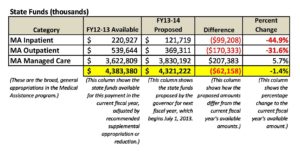The Proposed FY 2014 State Budget: Part 6 of 7
The Children’s Health Insurance Program
Pennsylvania Governor Tom Corbett recently unveiled his proposed state FY 2014 budget. The day he did, members of the Safety-Net Association of Pennsylvania (SNAP) immediately received a comprehensive memo outlining the governor’s budget proposal with an emphasis on the issues that matter most to the state’s 61 private safety-net hospitals.
Over a seven-day period, SNAP presents in this space the highlights of the governor’s budget, again with an emphasis on Medical Assistance and other matters of special interest to Pennsylvania’s safety-net hospitals. Today, SNAP takes a look at what the proposed budget says about the Children’s Health Insurance Program.
The governor’s proposed FY 2014 budget includes $24 million in new money for the Children’s Health Insurance Program (CHIP). This additional funding will support the addition of more than 9300 children to the program.
Tomorrow: Department of Health


